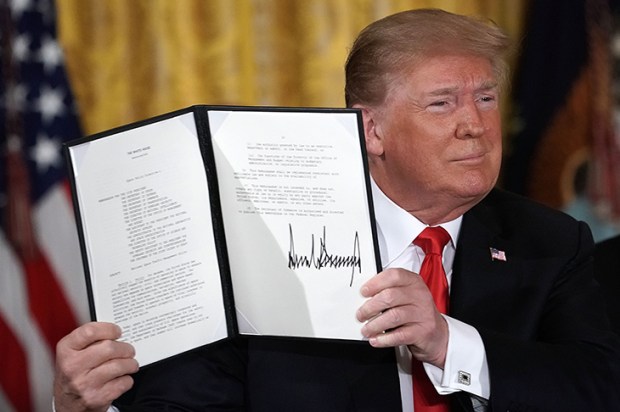‘Call it what it was, PM: a menacing attempt to increase anxiety in the Australian population,’ read the headline of an article by Mike Pezzullo last week. The most obvious attempt to increase public anxiety last week was the relentless beat up of tropical cyclone Alfred, the not-so-great, which was initially slated to be named Anthony and behaved exactly like the PM, dithering around off the Australian coast before dissolving into a tropical low.
The real and present danger Australia faces is not the weather, much less climate change, as the PM pretends. Australia is more than capable of building cyclone and flood-proof infrastructure particularly if it can get over its aversion to using dams to collect rainwater and control the flow of rivers.
The threat Pezzullo referred to was, of course, that posed by China, circling Australia as it assessed the best way to launch missile strikes on our military facilities and critical national infrastructure.
Pezzullo played a key role in successfully deterring unauthorised boat arrivals, and beefing up cybersecurity to counter foreign interference. It was therefore disappointing but unsurprising that he was dismissed in 2023 by the Albanese government which has preferred to kowtow to China rather than respond to the military threat it poses.
Yet the threat will not go away just because the PM refuses to address it. As the late, great major general and Liberal senator, Jim Molan warned in his last book, Danger On Our Doorstep (August, 2022), Australia needs to be ready to face a scenario where China launches a devastating opening salvo on US communications and intelligence capabilities rendering it blind and unable to assist Australia.
In reality, Trump has already done that to its putative ally, Ukraine, without so much as a popgun shot from Russia on US facilities. In addition, Trump’s peacemaking initiative has, predictably, emboldened Russia – which has increased its attacks on Ukraine – and China. How this plays out in Ukraine and Europe will be judged by the long-term results but the message for US allies, including Australia, is clear. We can only rely on the US to the extent that it perceives our defence as critical to its defence.
What Trump perceives as critical to US defence is far from clear but his administration’s foreign policy instincts are transactional – everything is framed in terms of deals – and isolationist. That means Trump’s view of threats and opportunities presented by China and Russia may overshadow whatever Australia sees as our shared interests.
The changed nature of Australia’s relations with the US was thrown into the spotlight this week by the imposition of 25-per-cent tariffs on Australian steel and aluminium exports to the US. Exports to the US represent about 21 per cent of our aluminium exports and 24 per cent of our steel exports so the impact on Australia economically will be less than the psychological impact.
The angry outcry – which included calls on social media to shut down Pine Gap, pull out of Aukus, or stop US naval visits to Darwin – showed how little Australians understand the weakness of our defence capabilities and the degree of our dependence on America.
The silver lining of this wake-up call is that Australians now know that we can’t rely on the US. In the face, then, of naked Chinese naval threats what we need to do is fortify our military bases and protect critical infrastructure from cyber and kinetic attacks so that they can survive initial strikes. We also need offensive cyber capabilities to deter or counteract attacks and dispersed and redundant command-and-control centres to ensure resilience.
Australia imports over 90 per cent of its refined fuel, mainly from South Korea, Singapore and Japan. Our strategic fuel reserves are also dangerously low, often 20 to 30 days rather than the 90 days supply recommended by the International Energy Agency.
If China blocks shipping routes in the South China Sea, or war breaks out there, our fuel supply would be severely disrupted. To counter this we should remove the regulatory and tax barriers – particularly the Petroleum Resource Rent Tax – to make oil extraction viable, and develop refineries to process domestic crude oil. Australia used to have eight refineries but now has only two –Geelong and Lytton.
We should also develop a strategic fuel reserve, like that of the US, building fuel storage terminals near ports, military bases, and key industrial areas, using existing infrastructure – old refineries, salt caverns, and underground reservoirs – in Geelong, Kwinana, and Brisbane for fuel storage.
If war breaks out in the South China Sea, we will also not be able to rely on foreign supply chains for other imports so we need to develop our domestic missile and ammunition manufacturing capabilities. If we are serious about surviving we also cannot waste another three years weakening the nation by making electricity more expensive and unreliable.
Australia has started investing in its defence manufacturing capability with the Guided Weapons and Explosive Ordnance Enterprise established to manufacture guided weapons, the Australian Missile Corporation, a subsidiary of Queensland-based defence contractor NIOA which specialises in guided and non-guided weapon systems to develop Australia’s missile manufacturing capacity, and the Joint Strike Missile Production, a partnership with Kongsberg Defence Australia to manufacture and service the Joint Strike Missile and Naval Strike Missile for the Australian Defence Force.
The Boeing MQ-28A Ghost Bat, a combat drone, is the first domestically designed combat aircraft in over half a century with a production facility under construction in Toowoomba, Queensland, and Praetorian Aeronautics, based in South Australia, specialises in manufacturing drones designed to counteract other drones.
The proposed expansion of Aukus to include Canada, South Korea, Japan and New Zealand presents significant economic and technological opportunities for Australian collaboration in advanced technologies such as artificial intelligence, quantum computing, hypersonics, electronic warfare, and autonomous vehicles.
While Australia increased defence expenditure under the Coalition to a peak of 2.09 per cent, under Labor it has fallen below 2 per cent. The efficiency of defence expenditure is also perpetually eroded by project delays and cost overruns. The top 21 projects combined have been delayed by more than 36 years, with the average project over two years late, and cost increases totalling $18 billion.
Apart from our domestic capacity to manufacture, we need to accelerate acquisitions to give us long-range strike capabilities launched from land, sea and air and an expanded submarine and naval fleet.
Finally, we have to raise public awareness about the national security threats we face to build support for Australia and recruit a larger combat-ready army.
Given the threats we face and the weakness of our defence it would be lunacy to fight the next election in anything other than khaki. Peter, for the sake of Australia, it’s time to get your gun.
Got something to add? Join the discussion and comment below.
You might disagree with half of it, but you’ll enjoy reading all of it. Try your first month for free, then just $2 a week for the remainder of your first year.













